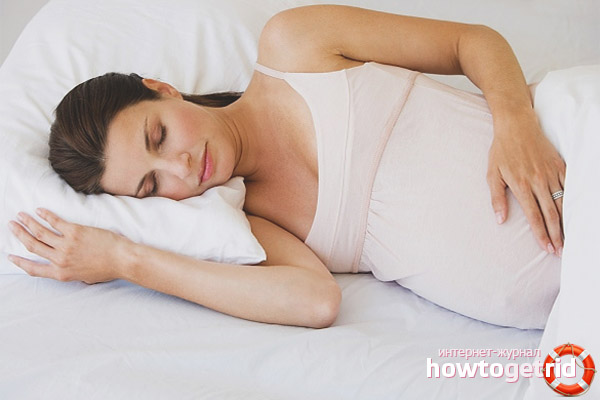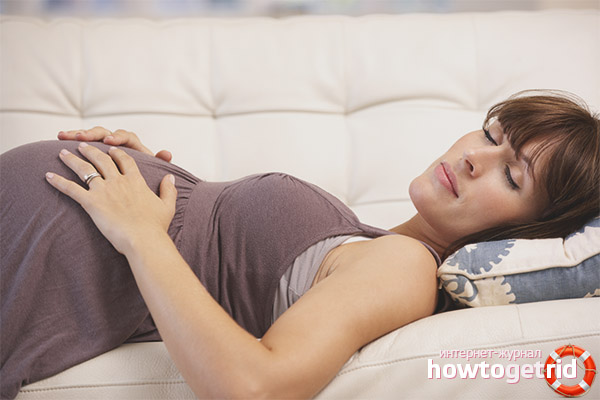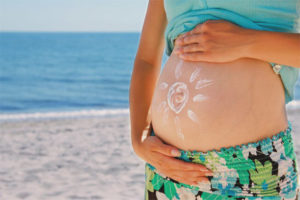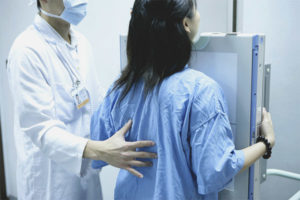The content of the article
The onset of pregnancy imposes a lot of serious restrictions on the expectant mother. They apply to food, and to familiar activities, and to the general mode of life, and even to sleep. It is wrong to think that the best posture for a pregnant woman to sleep is lying on her back, although there are sufficient grounds for such an assumption: the stomach does not constrict, the chest and heart are also more or less free, and besides, you can breathe easily! And this is so important for the future baby. But is this really so? This issue will be considered in more detail later in the article.
First half of pregnancy
At the very beginning of the development of a fertilized egg, many expectant mothers often do not yet realize their interesting situation and continue to lead their usual way of life. The same applies to the postures for sleep that a woman prefers. At these times, even such a pose that contradicts the pregnancy, like a sleep on the stomach, is not capable of causing serious harm to the baby - its size is so small that the uterus is hardly enlarged. However, starting from the 3rd month, the woman already feels weighting in the lower abdomen. At this time, the uterus increases three times in comparison with the original size and outwardly corresponds to the size of a large goose egg. The membrane of the fetal egg is actively developing and, in addition to the weight of the embryo, the weight of amniotic fluid begins to be felt.
When lying on the back, the woman already feels a slight discomfort. This is explained by a simple physical law of gravity, according to which any weighted object rushes down, with the level of pressure on the surrounding tissue, directly proportional to weight. In other words, in a pregnant woman, the uterus lumps on the internal organs located outside it, which means:
- The intestines are compressed: a woman may feel a slight tingling sensation, gas congestion, seething, and colic. Subsequently, this can provoke intestinal disorders, such as constipation or diarrhea, in connection with keeping the contents at a certain level.
- The liver, as well as the spleen and pancreas, may shift slightly, and this will cause tingling in the muscles.
- The inner vessels at this stage do not suffer much, but, nevertheless, if they are weak or prone to a certain disease, when lifting, a woman may feel a slight dizziness or darkening in her eyes.
- From the side of the kidneys, there is no significant discomfort at this stage, but, nevertheless, if there is an active phase of urine separation, a feeling of bursting from the sides can be felt.
How does this affect the kid? Basically, there is mild hypoxia caused by compression of regional blood vessels located behind the uterus. This should not be overlooked, since regular lack of oxygen by the child will slow down the development of his nervous system, and this, in turn, will negatively affect such processes as the timeliness of speech skills, the formation of the psyche, intellectual abilities, etc.
Second half of pregnancy
The second period of pregnancy is considered the calmest. This is a period of active growth of the internal organs and systems of the fetus, as well as its increase in size. The volume of amniotic fluid also increases significantly. By its end, the stomach increases significantly in size, the level of the uterus reaches indicators just above the navel. Her body is rounded, and the organ becomes like a chicken egg. At week 28, individual parts of the fetal body begin to grope (head, sometimes limbs - with active movement).
It is already difficult for a woman to choose previously familiar sleep poses, and obstetrician-gynecologists actively recommend a pose while lying on her left side. This is explained by the fact that the hepatic ducts are squeezed when positioned on the right side, which creates serious obstacles to the outflow of bile, and, in addition, in most cases, the placenta is attached to the right edge and there is a risk of pinching its vessels, and this can already end fatally for the fetus .
- Compression of the inferior vena cava: complicates the flow of blood to both the placenta and the lower extremities of the mother.
- Aortic compression: complicates the integrated nutrition of the mother’s internal organs.
In addition, do not forget about nerve fibers, the clamping of which will lead to a violation of the conductivity of nerve impulses from the spine to nerve leads of the lower extremities, and these are: a sharp decrease in the temperature of internal muscle structures, a slowdown in blood flow due to narrowing of blood vessels, loss of sensitivity in lower limbs. Also, long lying on your back can cause cramps in the calf muscles at night.
Sleep and long lying on the back also cause considerable problems for the excretory system. Displaced by the stomach in the normal state, the kidneys can hardly cope with the increased load placed on them. While the woman is lying on her back, her kidneys are squeezed additionally, which creates additional prerequisites for stagnation of urine and the development of infectious processes inside the organs.
Most of all, a spine suffers from such a dream, on which both the weight of the fetus and the weight of the internal organs adjacent to it press.
As we see, in a dream on the back there is nothing useful for a pregnant woman, and moreover, it causes irreparable harm to the baby, creating, in the first place, a deficiency of oxygen supply, which can further qualitatively disrupt the overall development of the fetus.
How to choose the right posture for sleep

As already mentioned, the optimal posture for sleeping a pregnant woman is considered to be a lying position on her left side. However, there are times when for some reason the child does not accept this pose. Each expectant mother is quite capable of feeling this: the baby begins to suddenly freeze, or vice versa, pushing more actively than usual, expressing its dissatisfaction.
In this case, you should periodically change postures and listen to the life of the child, as well as to their personal feelings. Every day, the fetus changes its position, and an uncomfortable posture yesterday today may well allow the expectant mother to have a good night's sleep and, thereby, restore the strength she and the child need.
Sometimes there are reasons why it is not possible to change the pose. This may be when:
- Fractures of bones received during pregnancy.
- The threat of detachment of the placenta - in this case, the posture is prescribed by the doctor and remains until the end of pregnancy.
In this case, the attending physician should monitor the condition of the pregnant mother and it is advisable to carry out any movements in his presence, and it is necessary to monitor the condition and reaction of the baby to these movements.
The sleep of a pregnant woman is a necessary measure to restore strength. However, you should be careful about the positions of the body and always listen to your feelings and the wishes of your baby.
Video: Can I sleep on my back during pregnancy?










Submit